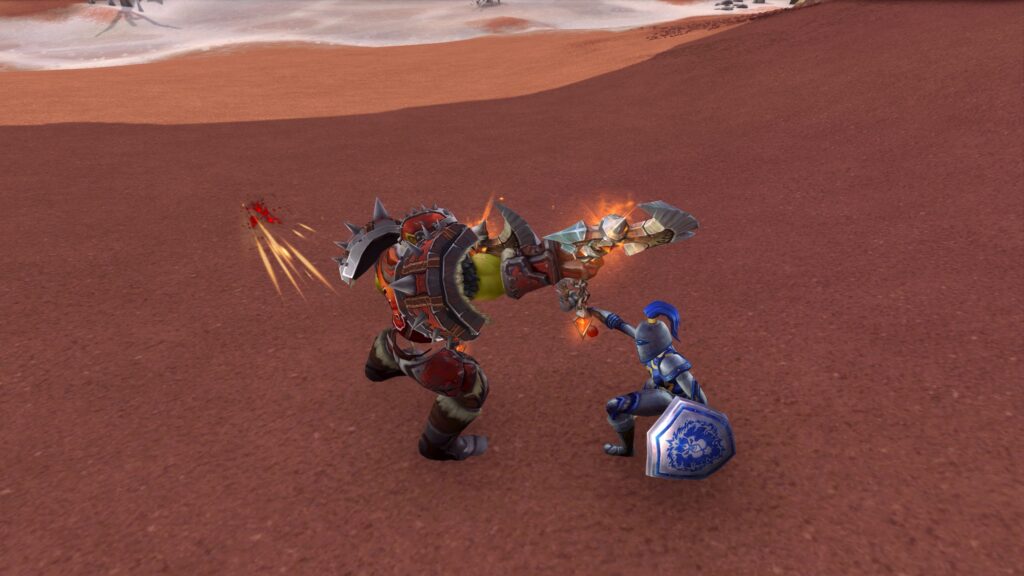Introduction
The Auction House is one of the most important features in WoW Classic, acting as the central hub for trade between players. Every item, from crafting materials to rare weapons, finds its way there, and the economy depends on player-driven supply and demand. Gold is the currency that keeps everything moving, and the more gold a player has, the more influence they can have on market trends. This is where WoW gold for sale comes into play. Many players, instead of grinding for hours to collect herbs, ores, or dungeon loot, choose to buy gold directly to save time.
When they bring that purchased gold into the Auction House, it changes how prices shift and how quickly certain items get bought out. For some, this creates new opportunities to profit, while for others it becomes a struggle as everyday items like consumables rise in price. Understanding how gold buying connects to the Auction House economy helps explain why some items spike in value while others remain stable.
The Role of the Auction House in WoW Classic
The Auction House in WoW Classic works as a direct marketplace where players can list items for gold and purchase from others. It is the main tool for trade since most players rely on it for supplies needed for leveling, professions, or raiding. Without it, the economy would be far slower because trading directly would require more effort. For example, raiders depend on the Auction House to stock up on flasks, potions, and resistance gear, while casual players often use it to buy better equipment they cannot easily farm themselves.

At the same time, dedicated farmers use the Auction House to turn their hours of grinding into profit. When WoW gold for sale enters the picture, buyers with large sums of gold can quickly dominate the Auction House by buying high-demand items in bulk or outbidding others. This creates ripples through the entire server economy, pushing some items far above what regular farmers or casual players can afford. As a result, the Auction House becomes more than just a marketplace—it becomes a stage where those with more gold dictate the flow of goods.
How WoW Gold for Sale Impacts Prices
When players purchase gold and bring it into the Auction House, prices shift in noticeable ways. The first effect is increased demand for high-value items. Buyers who suddenly gain a large amount of gold are more likely to spend it quickly on consumables, rare crafting recipes, or mounts, creating a rush on those listings. Sellers recognize this surge in demand and raise prices, leading to inflation across categories. Consumables like flasks and potions often show the fastest spikes because they are always in demand for raiding, and buyers with extra gold are willing to pay more for convenience. Materials such as herbs and ores also rise in price as bulk buyers clear out the cheaper listings.

On the other hand, players without extra gold feel the squeeze, as what was once affordable now becomes a struggle to purchase. This is why many argue that WoW gold for sale has a lasting effect on server economies, making the Auction House more volatile. At the same time, those who farm items for profit benefit from these changes, as their goods suddenly bring in higher returns than before. This push and pull between buyers, sellers, and farmers defines how the Auction House reacts whenever large amounts of purchased gold enter the economy.
Winners and Losers in the Auction House Economy
The introduction of WoW gold for sale into Classic doesn’t affect every player the same way. On one side, sellers and dedicated farmers benefit because demand for their goods increases. If a raider suddenly has thousands of gold to spend, they will pay top prices for flasks, crafted gear, or rare recipes. For a farmer, this means their time grinding herbs or ores becomes far more profitable. On the other side, casual players who rely on buying essentials with their limited gold lose out. As prices inflate, they find it harder to afford even basic consumables, which are required for raid participation or competitive play. This gap between those who can afford to buy gold and those who cannot creates tension within guilds and raid groups. Sellers gain more power in controlling market prices, while regular players feel squeezed. In this sense, the Auction House reflects the imbalance that purchased gold creates, rewarding those who take advantage of it while punishing those who try to stick with farming or casual play.

Example of Who Benefits Most
| Group of Players | Benefit from Gold Buying? | Reason Why |
|---|---|---|
| Farmers | Yes | Higher prices for their goods |
| Auction House Traders | Yes | Can flip items at inflated prices |
| Raiders with Gold | Yes | Faster access to consumables/gear |
| Casual Players | No | Struggle with inflated prices |
| New Players | No | Limited gold, harder to progress |
Risks of Market Distortion
While many players see WoW gold for sale as a shortcut, it can cause big disruptions to server economies. The sudden injection of gold inflates prices quickly, and this doesn’t always stabilize right away. A handful of players with large sums of purchased gold can buy out whole markets, cornering herbs, ores, or consumables. This creates artificial scarcity, where items are available but only at much higher prices. Over time, this discourages casual farming because players without access to purchased gold feel like their efforts don’t keep up with inflation. It also impacts guild preparation, since raiders who cannot afford inflated consumables might fall behind in raid progression. In the long run, these swings in prices create distrust within the community, as some players argue that gold buying undermines the fairness of the game. While it benefits sellers in the short term, the larger effect is often unstable, leaving the Auction House vulnerable to rapid and unpredictable changes.
Tips for Players Dealing With Auction House Inflation
Even though inflation caused by WoW gold for sale can be frustrating, players have ways to adapt. Farming high-demand materials such as Black Lotus, Arcane Crystals, or rare fish can turn inflation into profit. Selling niche items like recipes or rare world drops can also bring strong returns, as buyers with extra gold often spend more freely on unique items. Timing is important as well: posting items during raid reset days usually fetches higher prices since demand spikes. On the buying side, patience can save gold—checking the Auction House at off-peak hours or waiting for price drops often leads to better deals. Players can also watch market trends by tracking which items regularly rise and fall, adjusting their farming or selling accordingly.
Practical Ways to Handle Inflation
- Focus farming on high-demand raid materials.
- Sell niche items that rich buyers are willing to overpay for.
- List auctions during raid reset days for higher profits.
- Buy items at off-peak hours when competition is lower.
- Track market patterns weekly to predict demand.

Leave a Reply